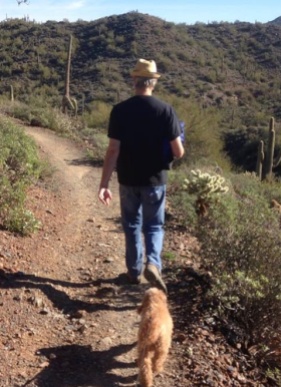“Love never fails.”-1 Corinthians 13:8
Today my children and I remember and honor their father, Bill McCandless, who died a year ago today. It’s been a challenging year in so many ways.
Some of the most important and gratifying work I do is as a parenting coordinator working with high conflict co-parents who are stuck being immersed in their hurt. They cannot see clearly to find healing and forgiveness with their coparent. I love working with those couples because I was one of those high conflict wounded people, after Bill and I divorced in 2003 following 18 years of marriage and having three children.
Through God’s grace and a firm commitment to find healing and forgiveness no matter how long it took, we overcame those difficult days and were friends, celebrating many events in our children’s lives together for several years before he died. One of my greatest blessings was that I was able to hold his hand and tell him I loved him and thank him for our beautiful children as he was dying.
Since his death, our first grandchild has been born. The baby’s mother has a photo of Bill (her dad) on her fireplace and I have sat many days in the rocking chair at the home of my daughter and her husband in the quiet, rocking baby Liam. While I rock I often look at the picture on the fireplace, recognizing that the one person who perfectly understands that love I have for Liam would have been Bill.
While Liam is well loved by many, no other person, friend, loved one, grandparent, aunt or step parent on Earth will see him quite like I do…. but for Bill…. because our own child who we created together gave birth to Liam. I’ve been sharing this insight with the high conflict couples I work with in parenting coordination for the past year, and often tell them about Bill’s death and my experience. I sometimes ask them to look across the table into the eyes of their coparent with the possibility that what I am saying could make sense for them someday. That the person they are at war with will one day share an understanding of a love that neither of them can describe to anyone, but that both of them will inherently “get.” Often there are tears from all three of us and on some rare occasions there is a small breakthrough to a healing path.
It’s funny because throughout the past year as I grieved, I was able to forget..literally…the issues that divided us all those years ago, the drama that we created in our hurt of high conflict, and the sadness that swept through our family during those “lost” years. Instead, the memories that came to mind often were those of when we were young and newly married, and the times we sat rocking our own children with awe and wonder at the precious lives we had created with God. So many times through the past year I rocked in the quiet and looked at that picture on the fireplace whispering through tears, “Look Bill! Look at our precious grandchild!”
I’ve seen miracles in high conflict parents in my work. A small number of them transform completely. Some agree to a silent truce. Some continue to work hard and I still hold out hope for their finding peace or transformation. Others I have “fired” telling them I suspect they are getting a secondary gain of some sort from keeping the conflict alive, and draining my life energy in what is grueling and emotional work.
Are you one of those high conflict co-parents? Are you someone who doesn’t even speak to your coparent? Today is a new day. We are on the threshold of a new year. You can choose forgiveness and healing or maybe a truce. Or maybe you will choose some gesture that is a small step towards whatever life transformation that is unique to you and your circumstances.
One thing I know for sure: Your coparent is one of your greatest life’s teachers.
Thank you Bill for all you taught me.
May your memory be eternal.





 Everywhere I turn I’m hearing about meditation. There are meditation retreats, podcasts, books and people pitching its benefits. I’m noticing a divide beginning: either you meditate or you don’t. Some with other traditional spiritual practices incorrectly dismiss meditation as being affiliated with a specific religion, usually Buddhism.
Everywhere I turn I’m hearing about meditation. There are meditation retreats, podcasts, books and people pitching its benefits. I’m noticing a divide beginning: either you meditate or you don’t. Some with other traditional spiritual practices incorrectly dismiss meditation as being affiliated with a specific religion, usually Buddhism.




